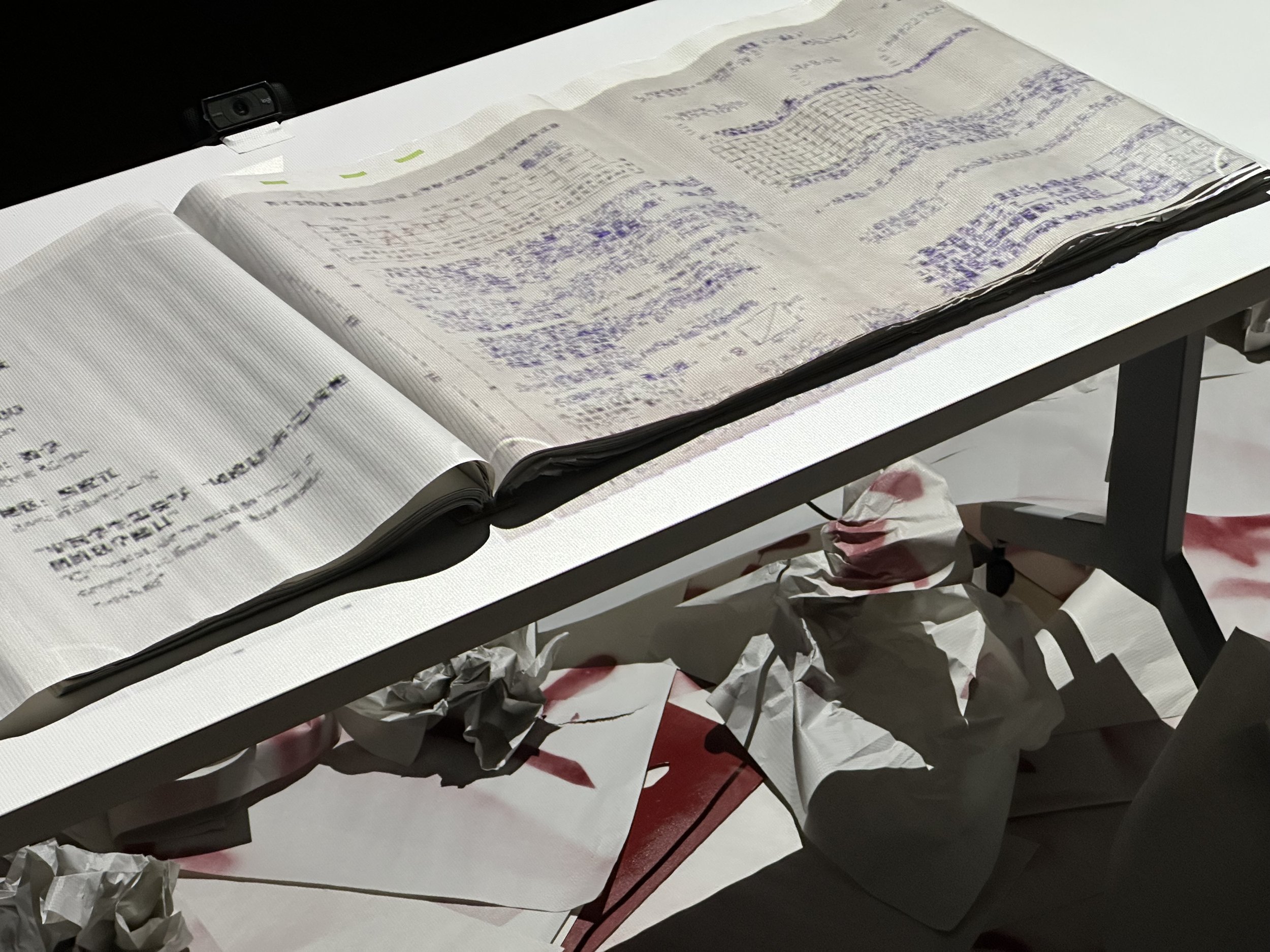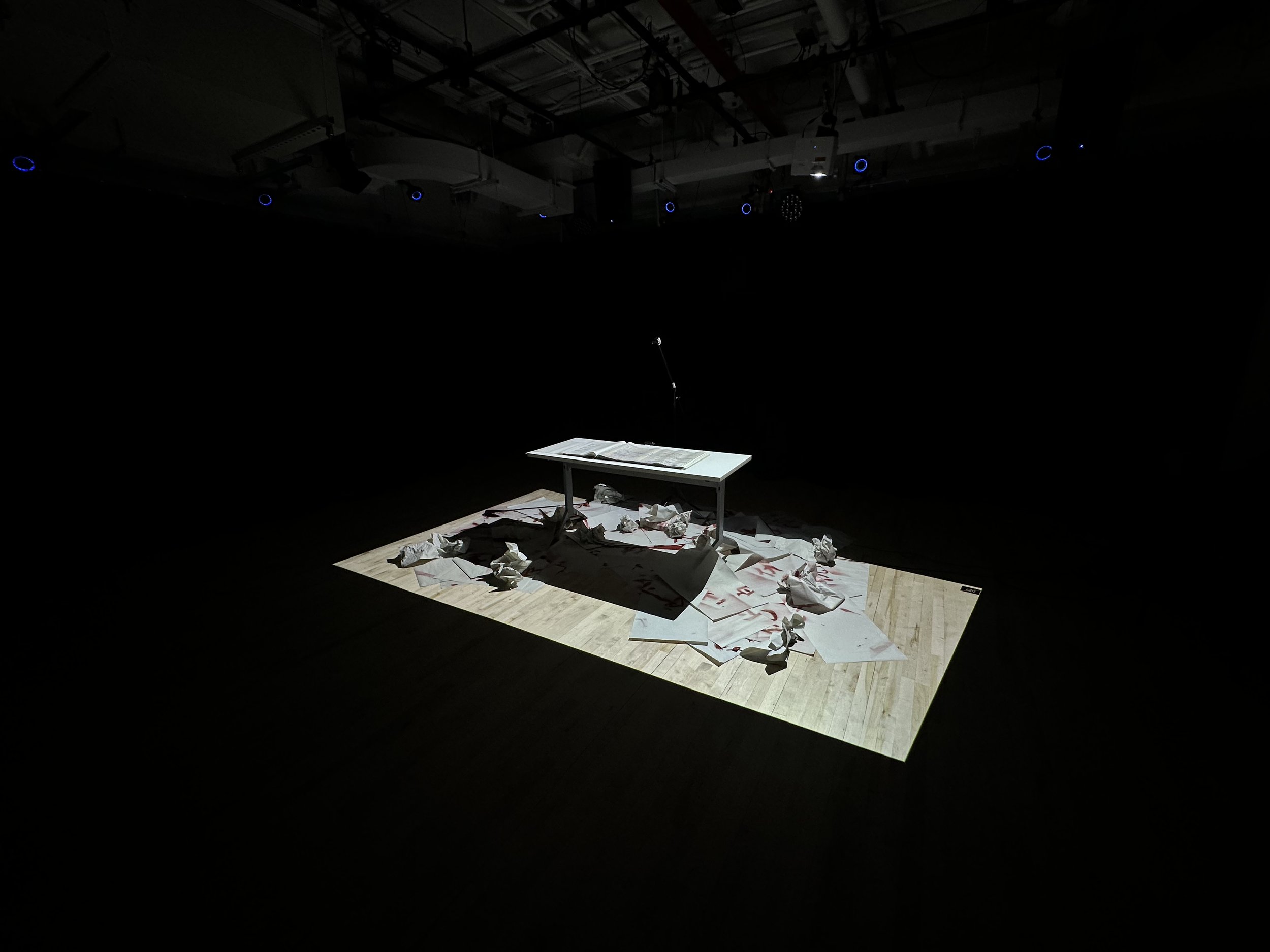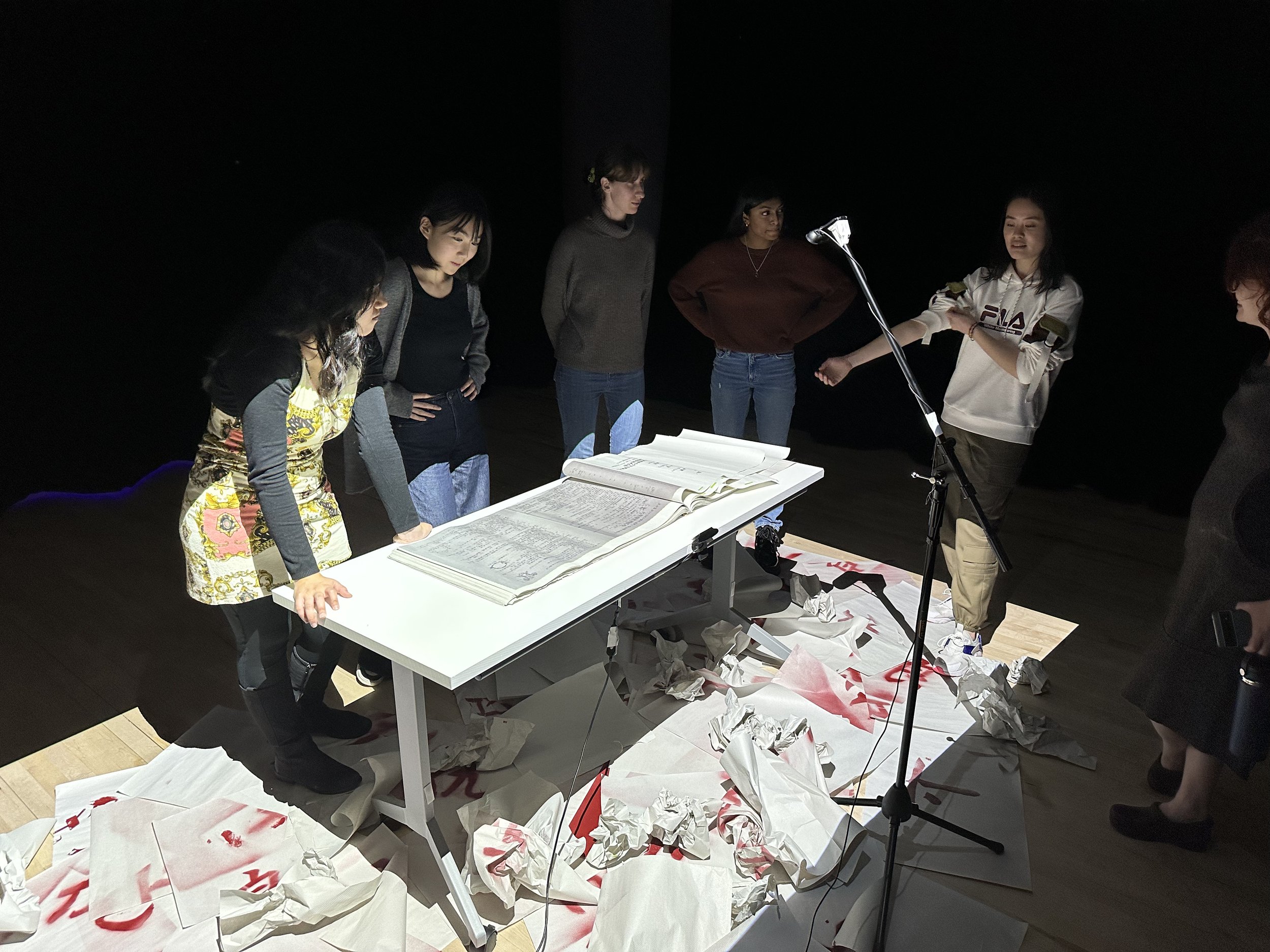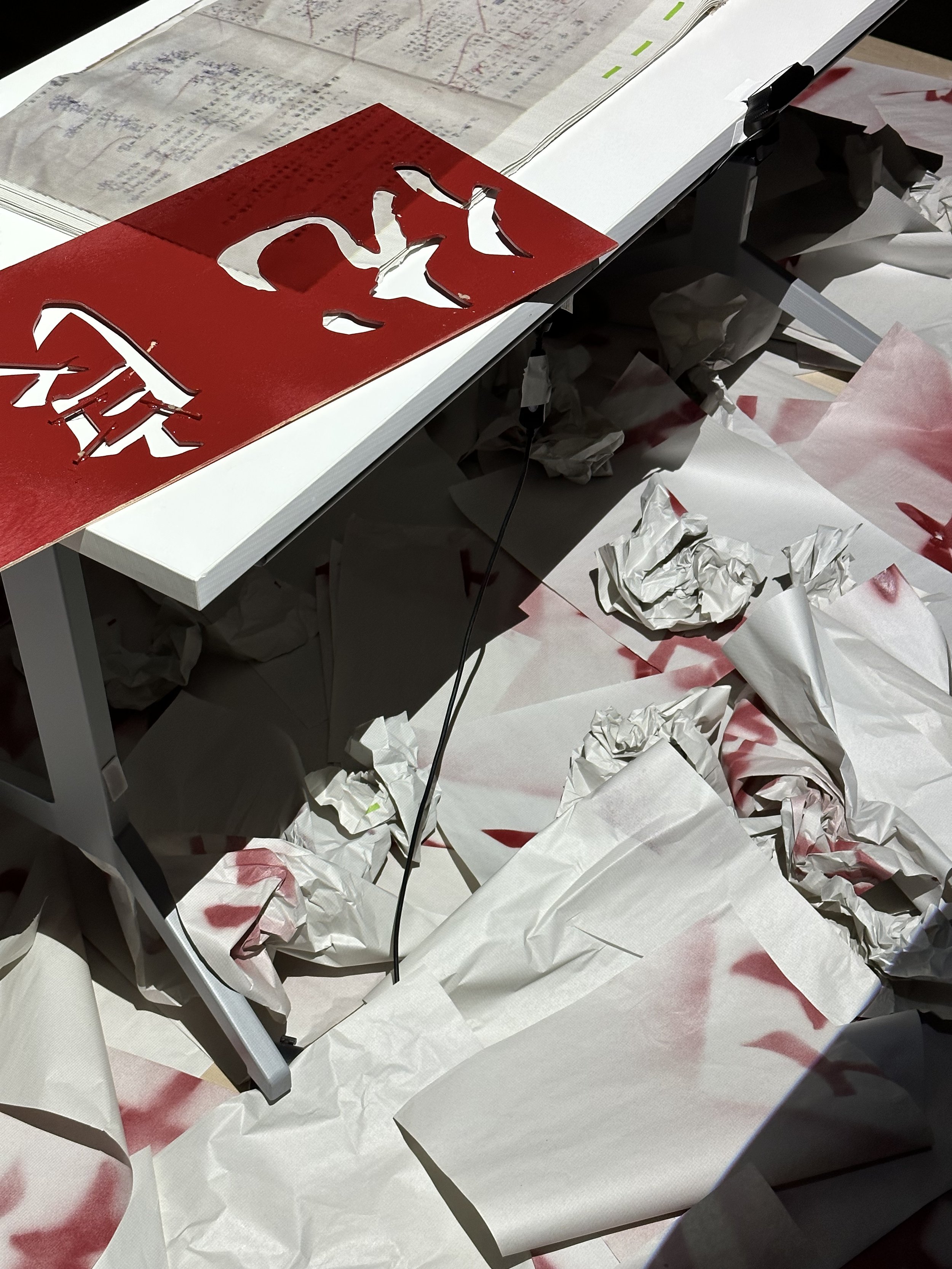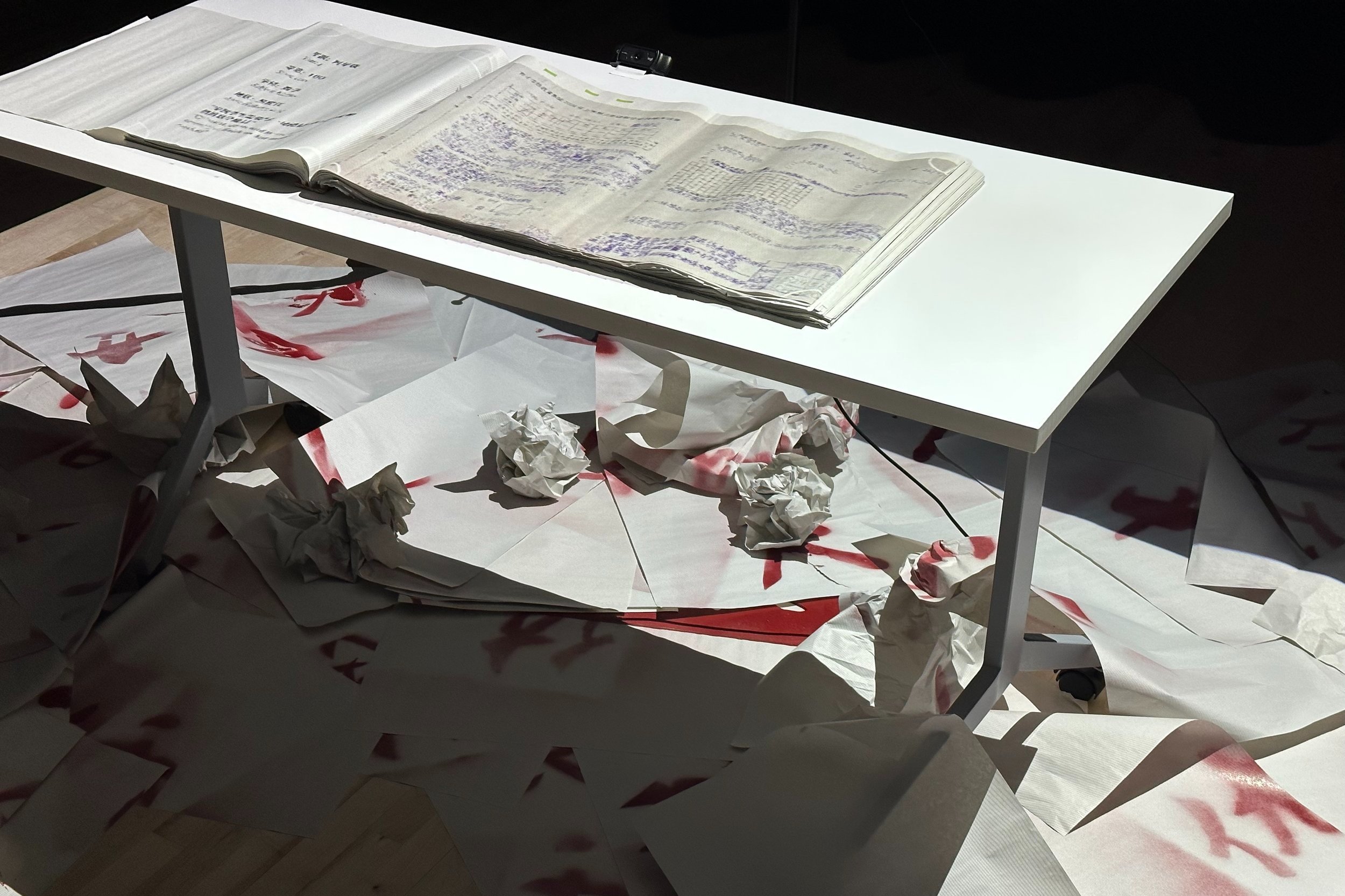
90 Centimeters
We collected more than 130 pieces of exam papers and used 50 of them from 34 provinces in China across 9 school years (from grade 3 to grade 12). We used a projector to project map these exam paper samples to a custom-made exam sheet book. On the book, the right side will chronologically demonstrate one of the exam paper samples. The left side will show the relevant information about the exam paper shown on the right, including score, school year, subject, and region. There is a camera above the exam sheet book, detecting the red and green marks on the book pages. Once we rip a page, the camera uses jit. find bounds to detect this change and play a second further, causing the projection changes to the following exam paper sample. It would change year by year, from grade 3 eventually to grade 12, which we call this growth. During the whole process, letting the audience understand our content is always our priority. The red sprayed Chinese characters of “Good, Fair, Average, Fail”, as well as the face-tracking background sound effects, are the two efforts we create to strengthen and intensify the ambiance. The already-ripped exam papers on the ground genuinely lead participants to rip the exam sheet book.
The key characteristic of 90cm is always unsustainability. The ripping-book behavior is irreversible; for each book page we rip, the video projected will move one second further, just like our growth; what is done is done. It is not only the exam papers we tore but also our memory and our past. Another point worth mentioning is we also somehow wanted to satirize this exam-based educational system. It is stressful, but is it significant? After the exam sheet book page is torn and thrown on the ground, it becomes a normal recycled paper without a projection. It makes us think, after doing the exam, are the exam papers still worthwhile?
Co-created with KaiWen Chen
